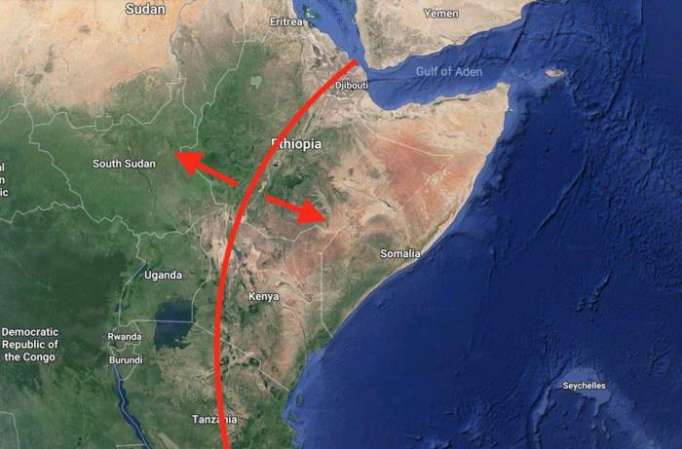The sudden appearance of the crack is related to a regional zone of weakness and broadly associated with the continued breakup of the African continent. The leading hypothesis behind the breakup of the African continent is caused by an underlying superheated plume. This plume is causing Africa to split in two along the eastern edge of the continent. Thankfully, the rifting process will take many millions of years as the crust begins to thin and sink and a small seaway begins to intrude the rift zone.
Splitting a continent in two is quite common, for instance, it led to the opening of the Atlantic Ocean. Notice how Africa and South America would fit perfectly together, this is because they were once one landmass, eventually sutured apart by the Mid-Atlantic Ridge. While scientists have known for quite some time about the rifting in Africa, the underlying cause has been hard to pin down. Evidence suggests it is due to a superplume upwelling along the eastern edge of Africa, figuratively "burning" a hole in Earth's crust.

Schematic of a mantle plume similar to the one seen in the East African Rift system.
This superplume created the East African Rift System (EARS), the system associated with the breakup of the African continent. The East African Rift Valley, produced as a result of the ongoing splitting of the African continent, stretches more than 3,000 km from the Gulf of Aden to Zimbabwe. The rifting, which began about 25 million years ago, will eventually create two separate continental masses associated with the Somalian and Nubian tectonic plates. The process, however, will take millions of years at the current spreading rate of a few millimeters per year.
Forbes
More about:















































